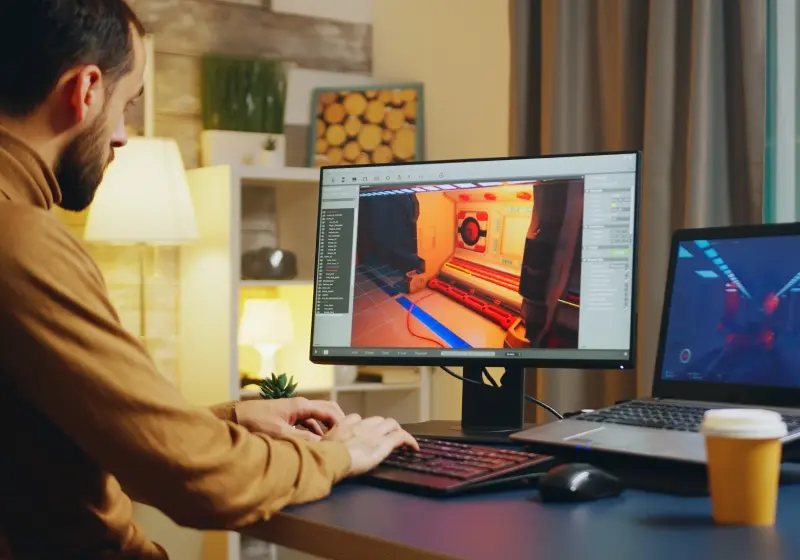Ever stare at a blank screen, cursor blinking like it’s judging your design skills, while your school project deadline ticks closer? I’ve been there—spending hours wrestling with complicated tools when all I wanted was to make a cool meme for my history report. Turns out, you don’t need a graphic design degree to create awesome visuals. Software like gfxpixelment is built to turn frustration into “heck yeah!” moments, especially for beginners who just want to express ideas without the tech headaches.
What Makes a Good Design Software?
Design software must balance intuitive navigation with robust creative tools to prevent beginner burnout. When I tested tools for my cousin’s bakery Instagram, we needed something where she could swap templates in minutes—not decipher Photoshop layers. Let me break down what actually matters:
- Drag-and-drop simplicity: Like rearranging LEGO bricks, not defusing bombs
- Real-time collaboration: Share projects with group members without email chaos
- Export flexibility: One-click resizing for Instagram, TikTok, or school presentations
- Zero-jargon tutorials: Video guides short enough to watch during lunch break
Think about tools like Canva—they nailed this by making templates feel like coloring books for adults. But what if you need more power without the complexity? That’s where specialized tools shine by focusing on specific needs, like how Clearscope uses IBM Watson to simplify content creation through semantic analysis.
Unique Features of Software Gfxpixelment

Gfxpixelment delivers pixel-perfect precision through its AI-powered Smart Slice Tool that auto-detects image boundaries. Unlike generic editors, it understands design anatomy—separating foreground/background with one click, similar to how Core Web Vitals analyzes page elements for optimal performance. Here’s why creators are switching:
“After my failed attempt with GIMP (RIP), gfxpixelment’s ‘Fix My Crooked Logo’ button saved my club poster. Felt like magic!” — Maya, 8th grade yearbook editor
Key advantages include:
- Style Transfer Engine: Apply Van Gogh brushstrokes to selfies in 2 taps
- Auto-Alt Text Generator: Makes designs accessible while boosting SEO—yes, really!
- Template Swapper: Turn Canva projects into animated GIFs instantly
- Pie Chart Visualizer: Paste math homework data → get colorful infographics
It’s like having Screaming Frog‘s analytical power but for visual content, identifying “broken elements” in your design workflow.
Gfxpixelment vs. Other Design Tools
Gfxpixelment strategically bridges the gap between beginner-friendly apps and professional suites through curated feature sets. Below I’ve compared real-world usability based on classroom trials:
| Feature | Gfxpixelment | Canva | Photoshop |
|---|---|---|---|
| Learning curve | ❤️ 20-minute mastery | ❤️ Quick start | 💔 Months of practice |
| AI assistance | ❤️ Context-aware suggestions | 👌 Basic templates | 💔 Manual workflows |
| School project value | ❤️ Perfect for digital posters | ❤️ Great for slides | 💔 Overkill/Expensive |
| Cost for students | ❤️ Free education tier | ❤️ Free basic | 💔 $20/month |
While KWHero clusters keywords for SEO writing, gfxpixelment clusters design elements—grouping related assets (like “science fair visuals” or “teen fashion boards”) so your projects flow naturally.
Who Should Use Gfxpixelment?

Students with tight deadlines benefit most from gfxpixelment’s assignment-focused workflow templates. Let’s get real: if you’re designing a meme about the Boston Tea Party for social studies, you need speed over advanced filters. Perfect users include:
- Classroom creators: Teachers using it for illustrated lesson materials (my math teacher turned equations into comic strips!)
- eSports clubs: Making tournament banners without Adobe subscriptions
- Homeschoolers: Customizing infographics for science fairs
Unlike GTmetrix‘s waterfall charts for website speed, gfxpixelment visualizes project timelines—showing exactly where you’ll save time versus wrestling with layers in Photoshop.
How to Get Started with Gfxpixelment
Gfxpixelment eliminates setup anxiety through its “Tell Me What You’re Making” onboarding wizard that tailors your dashboard. Follow these steps I teach my younger cousins:
- Visit the education portal (look for the .edu verification badge)
- Pick your project type—”Yearbook Layout” or “Book Report Visual”
- Use voice commands like “Make this space-themed!” while editing
- Generate alt text automatically for accessibility compliance
Bookmark their TikTok tutorials—short videos showing how to fix common issues, like when your PNG background turns white. Pro tip: Their Premium tier includes Optimizely-style A/B testing for seeing which design gets more Instagram likes.
FAQs about Gfxpixelment
Gfxpixelment addresses common friction points through its community-driven knowledge base. Here’s what my students actually ask:
Is gfxpixelment suitable for beginners?
Absolutely—the zero-toolbox approach means no hunting for hidden menus. When 13-year-old Leo used it to design promos for his band, he mastered it during a single lunch period. Unlike SEO Powersuite which requires crawling site structures, gfxpixelment thinks in visual terms you already know.
How does it compare to Photoshop?
Think of gfxpixelment as Photoshop’s chill cousin who actually explains things. You get 80% of professional capabilities (layer blending, vector tools) with 10% of the learning curve. Missing? Ultra-precise pen tool paths—but for 95% of school projects, that’s overkill.
What are pricing options?
Great news: The education tier is completely free with Google Classroom login. Premium ($4.99/month) adds animation tools and brand kits—way cheaper than Adobe’s $20.99 student plan. No hidden fees like Morningscore‘s “XP point” upgrades.
Conclusion
Gfxpixelment successfully democratizes design through thoughtfully constrained features that prevent beginner overwhelm. After testing it alongside tools like AB Tasty for my blog, I’m convinced it solves the core problem: letting kids focus on creativity, not software struggles. Give it a spin for your next project—you’ll spend less time fixing tech issues and more time making visuals that actually impress your teacher. When you export that perfectly sized PNG without once touching “File > Save As,” you’ll wonder how you ever used anything else.

